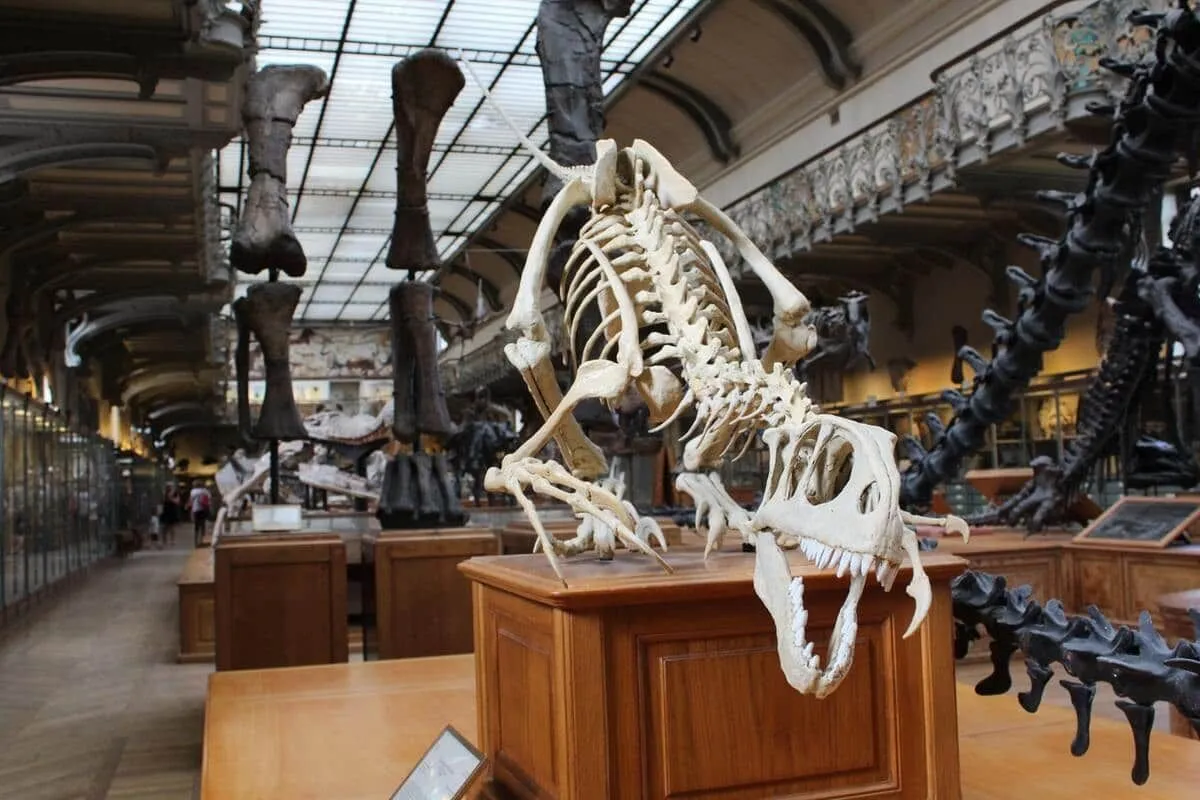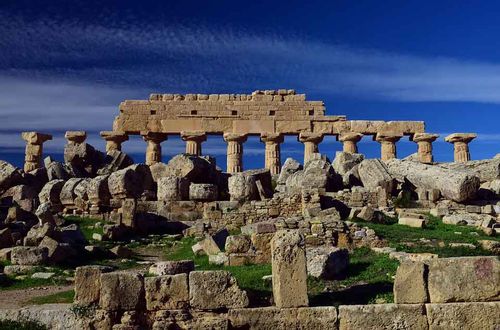FOR ALL AGES
Remember the frilled-neck dinosaur that spits poison in the 1993 'Jurassic Park' movie?
Well, every fan of the movie probably knows this species thanks to director Steven Spielberg. Spielberg made it famous by depicting it as quite a cute, curious, shorter-than-a-human dinosaur with large neck frills that could kill people by spewing venom into their eyes.
While it’s a memorable scene, it turns out that the depiction of Dilophosaurus is nowhere near reality. What kind of species is a Dilophosaurus then? Did it really spit venom? What did it look like? What did it eat? These are only some of the questions we’ll answer in this list of incredible Dilophosaurus facts.
Before we go on, if you’re into interesting facts about different animals and species, don’t forget to check our lists on jellyfish facts for kids and true facts about the mantis shrimp after learning more about dinosaurs.
Among the seven species that are featured in 'Jurassic Park', the Dilophosaurus, the dinosaur with neck frill that we all know and love, was one of the two that actually lived during the early Jurassic period. The other was the Brachiosaurus. However, there are questions regarding the accuracy of the movie in depicting the Dilophosaurus. So, what is fiction and what is not?
1. No, the Dilophosaurus dinosaur didn’t spit poison. This depiction came from pure imagination of Michael Crichton, the writer of the novel that the 'Jurassic Park' movie is based on. There’s no evidence that any dinosaur from the Mesozoic Era used poison when attacking or defending itself.
2. Unlike what the movie shows when the Dilophosaurus expands its vibrating fins, the dinosaur species didn’t have these in real life since. There’s no evidence that any carnivorous specifies of a dinosaur with a neck frill existed. What the movie got right though are its bony head crests.
3. The neck frills were given to the movie version of the Dilophosaurus dinosaur so that the audience could distinguish the species from the Velociraptor.
4. The Dilophosaurus shown in the film is short and tiny, which is the complete opposite of what researchers believe to be the size of this species. The real Dilophosaurus' height was over 20 feet and the weight was 1,000 pounds.
5. In 'Jurassic Park' , the characters came across a lone Dilophosaurus. Compared to reality, this was highly unlikely because Dilophosaurus dinosaurs belonged to packs, meaning they lived and hunted as a group.

With the dilophosaurus' weight and height, you'd think that it would be easy for them to prey on anything that moves. But, there were some considerations regarding their eating habits.
6. The Dilophosaurus loved to eat meat. However, hunting would’ve been difficult for them because their jaws were loosely attached. If they did hunt, they targeted only small preys using their clawed arms and legs.
7. Because using their teeth to kill would’ve been difficult, the Dilophosaurus were more likely scavengers, eating out of carcasses.
8. With teeth like needles, Dilophosaurus may have been a fish-eater. They’re able to catch fish by puncturing them, and thanks to their high-set nostrils, they’re able to keep their head above the water.
Why was the Dilophosaurus given this name? How was it classified? When was it discovered? Read on!
9. It was in '40s when the first Dilophosaurus fossil was found in Arizona in the United States. Sam Welles discovered the remains in 1942 when Navajo Jesse Williams led him, Bill Rush and Ed Kott to the site.
10. All in all, three sets of Dilophosaurus skeletons have been discovered in Arizona. They are now housed at the Museum of Palaeontology at the University of California.
11. The Dilophosaurus lived during the early Jurassic period, some 193 million years ago. These early Jurassic dinosaurs are believed to be a recent descendant of the first true dinosaurs, which existed during the Triassic period 230 million years ago.
12. The classification of the Dilophosaurus isn’t certain, given the wide range of small-to-medium-sized theropod dinosaurs back then. Scientists have placed the Dilophosaurus into different classifications, ranging from a ceratosaur to coelophysis.
14. The name Dilophosaurus was based on their head crests, which they're known for. These paired crests were located at the top of the Dilophosaurus' skull. No one knows for sure what these crests were used for.
15. Some scientists believe the crests were used for mating purposes, showing whether males were attracted to the female dinosaurs. Others, meanwhile, believe that the crests were used to identify each other since Dilophosaurus hunted as a pack.
16. The name Dilophosaurus is made of words of Greek origin that mean “two” “crest” and “lizard”. Therefore, Dilophosaurus means "two-crested lizard".
17. Megalosaurus wetherilli was the former name of the Dilophosaurus. This is because scientists placed different meat-eating dinosaurs under the category of Megalosaurus.
19. The only specimens of the Dilophosaurus that have been discovered so far were found in Southwest America. However, footprints suspected of belonging to the species were seen in Connecticut and Massachusetts in the 1840s.
20. The tracks were named Eubrontes giganteus since it’s unsure whether they’re from the Dilophosaurus.

From the Dilophosaurus' size to their weight to how they carry themselves, this species had certain traits and characteristics that allowed them to adapt to their habitat.
21. Being part of the predatory theropod dinosaur, the Dilophosaurus might have been warm-blooded like human beings. Unfortunately at the moment we cannot confirm this, more research is needed.
22. Despite their huge weight, the Dilophosaurus didn’t have trouble carrying themselves. This means that they didn’t suffer from stress fractures when they walked or hunted.
23. The Dilophosaurus had weak teeth at the back of the upper jaw and firmer teeth on the front. This is why they may not have had the capacity to kill large preys using their mouth.
24. Based on footprints found in Utah, the Dilophosaurus sat like a bird. Their prints showed impressions as if they were squatting down like a bird.
25. Based on imprints discovered in mud, it is possible that the Dilophosaurus had feathers.
Dinosaurs are known to be scary and terrifying, considering their appearances and how they are portrayed in 'Jurassic Park'. But like any other species, the Dilophosaurus had its own way of attacking an enemy and defending itself.
26. Likened to an ostrich, the Dilophosaurus was active and bipedal. They moved fast, which was an advantage when hunting.
27. They have powerful and flexible forelimbs, which could be used to attack and defend.
28. With strong hands, they could grasp and slash their enemy’s neck. They can also bounce on their tail as they fought an enemy.
29. There’s a kink in their upper jaw that can also grip or hold down prey.
Here at Kidadl, we have carefully created lots of interesting family-friendly facts for everyone to enjoy! If you liked our Dilophosaurus facts, then why not take a look at these bat facts for kids, or these Mesozoic era facts?
Read The Disclaimer
At Kidadl we pride ourselves on offering families original ideas to make the most of time spent together at home or out and about, wherever you are in the world. We strive to recommend the very best things that are suggested by our community and are things we would do ourselves - our aim is to be the trusted friend to parents.
We try our very best, but cannot guarantee perfection. We will always aim to give you accurate information at the date of publication - however, information does change, so it’s important you do your own research, double-check and make the decision that is right for your family.
Kidadl provides inspiration to entertain and educate your children. We recognise that not all activities and ideas are appropriate and suitable for all children and families or in all circumstances. Our recommended activities are based on age but these are a guide. We recommend that these ideas are used as inspiration, that ideas are undertaken with appropriate adult supervision, and that each adult uses their own discretion and knowledge of their children to consider the safety and suitability.
Kidadl cannot accept liability for the execution of these ideas, and parental supervision is advised at all times, as safety is paramount. Anyone using the information provided by Kidadl does so at their own risk and we can not accept liability if things go wrong.
Kidadl is independent and to make our service free to you the reader we are supported by advertising.
We hope you love our recommendations for products and services! What we suggest is selected independently by the Kidadl team. If you purchase using the buy now button we may earn a small commission. This does not influence our choices. Please note: prices are correct and items are available at the time the article was published.
Kidadl has a number of affiliate partners that we work with including Amazon. Please note that Kidadl is a participant in the Amazon Services LLC Associates Program, an affiliate advertising program designed to provide a means for sites to earn advertising fees by advertising and linking to amazon.
We also link to other websites, but are not responsible for their content.
Was this article helpful?



Browse Category

We’ll send you tons of inspiration to help you find a hidden gem in your local area or plan a big day out.



Check your inbox for your latest news from us. You have subscribed to:
Remember that you can always manage your preferences or unsubscribe through the link at the foot of each newsletter.